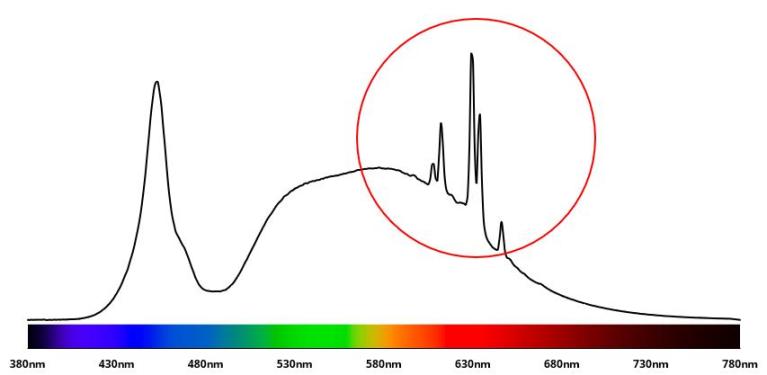
Do you understand your horticulture light?
In the hot market of LED horticulture lighting, we have seen some manufactures are promoting their lights with the spectrum below. It is a bit strange compared to a standard LED because of its continuous peaks at ~630nm. Seems like an extra red LED but is not – this spectral pattern indicates that a special LED phosphor named KSF is mixed in the package.
The KSF phosphor helps improve the efficiency significantly – the reason for being chosen to horticulture light where the photosynthetic efficiency is critical. However, due to the material construction, KSF phosphor is weak at resisting humidity, while the plant growth environments are always with high humidity. According to our data, the KSF LED will decay 7% after 1000 hours in a high humidity environment. This is unacceptable for the DLC certification.
But KSF phosphor is widely accepted in the applications like LED backlight of the display screen where the LED is enclosed without humidity. And combining with the β-SiAlON green phosphor, it can achieve over 100% NTSC color gamut.
When applying the technologies to a completely different industry, we should be careful of the practical problems.
